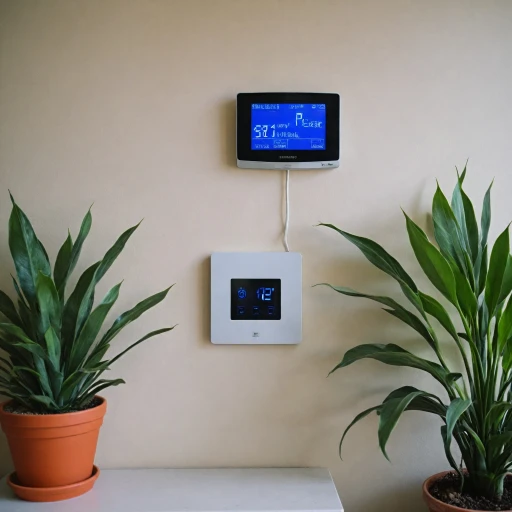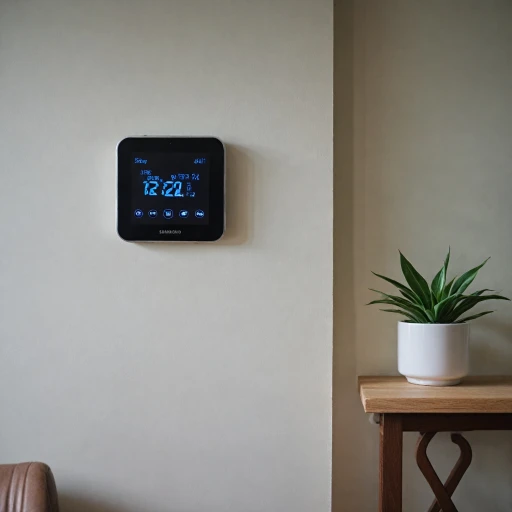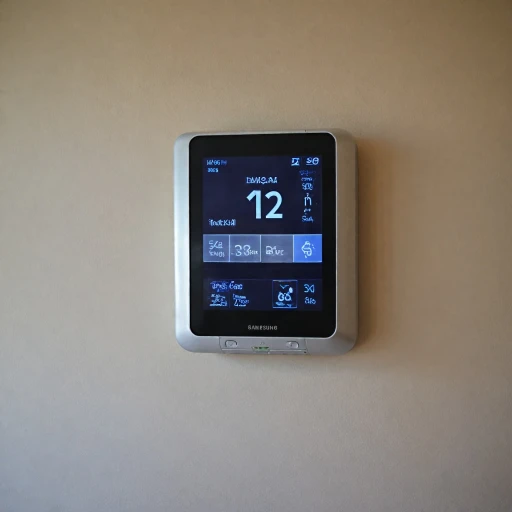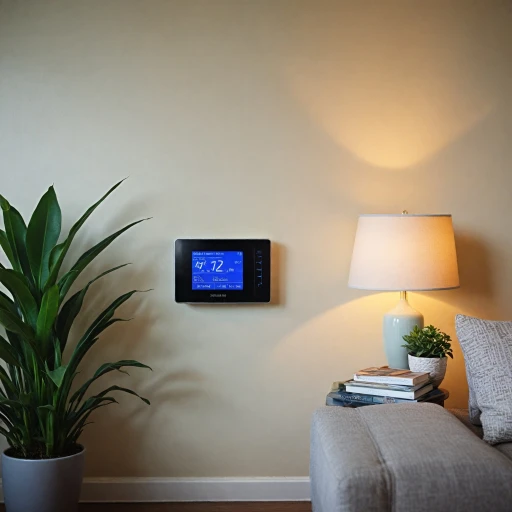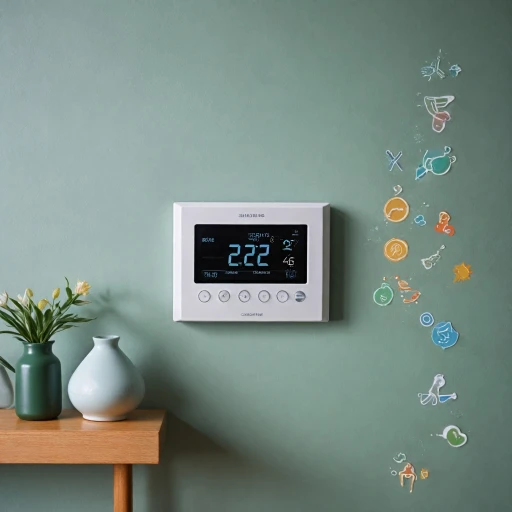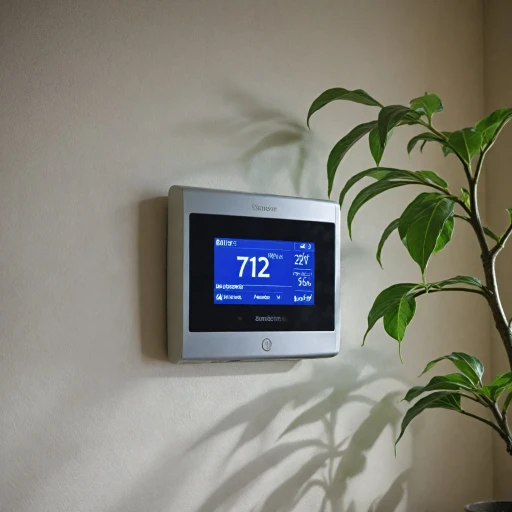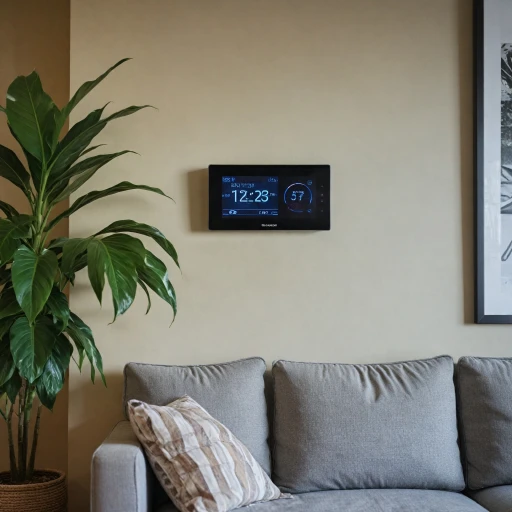
What is a Floor Heating Thermostat?
Introduction to Floor Heating Thermostats
Floor heating thermostats serve as the control center for radiant heating systems within a home. These devices manage the temperature of electric floor systems by using a floor sensor to ensure optimal comfort and energy efficiency. Unlike traditional heating thermostats, they are specifically designed to work with radiant heat, providing a warm and inviting environment. Electric floor heating systems, commonly referred to as underfloor heating, employ these thermostats to regulate the heat produced by the system. Floor heating thermostats can be standalone units or integrated into a smart home setup, sometimes referred to as smart thermostats, offering programmable features and remote control capabilities.Understanding Their Unique Functionality
A unique feature of these thermostats is their ability to specifically manage ditra heat and other similar underfloor heating systems. With programmable settings, a floor heating thermostat allows homeowners to schedule heating times, maintaining a comfortable floor temperature while minimizing energy consumption. The integration of a floor sensor is paramount for accurate measurement of both floor and ambient temperatures. This ensures that the electric radiant heat is monitored accurately, avoiding overheating or underheating, ensuring optimal comfort throughout your living space. For more technical details on how floor heating thermostats operate and their many functionalities, you can explore the features of the Pro 1 T701 thermostat. This resource provides insights into various product specifications and helps explain how such products enhance energy efficiency and comfort in your home environment.Benefits of Using a Floor Heating Thermostat
Advantages of Integrating a Floor Heating Thermostat
Utilizing a floor heating thermostat in your home offers numerous perks, ensuring both comfort and efficiency throughout the colder months. These thermostats, particularly those equipped with programmable and smart features, can revolutionize the way your radiant heating system operates. Here are some key benefits:
- Improved Energy Efficiency: Floor heating thermostats assist in maintaining consistent temperatures, reducing energy waste significantly. Through smart and programmable settings, the system can adapt to your routine, ensuring warmth only when needed.
- Enhanced Comfort: Unlike traditional heating systems, radiant floor heating provides even warmth across the floor. With a proper heating thermostat, you can enjoy customizable comfort levels, perfect for cold winter days.
- Smart Control Capabilities: Advanced thermostats offer control over your heating system from anywhere. Adjust settings remotely, monitor energy usage, and receive maintenance alerts, optimizing your comfort and savings.
- Cost-Effective Solutions: Though the initial price for these products might seem high, they can lead to long-term savings on heating bills. This is especially true for electric radiant systems combined with a programmable thermostat.
- Adaptability and Integration: Modern thermostats, like those from Nuheat and Schluter Ditra, are designed to work with a variety of floor heating systems, including electric and floor sensor systems, ensuring a seamless fit into existing setups.
For those considering an upgrade, exploring the features and benefits of Aprilaire thermostats can provide additional insights into optimizing your heating thermostat setup.
How to Choose the Right Floor Heating Thermostat
Key Factors for Choosing Your Ideal Floor Heating Thermostat
Selecting the right thermostat for your floor heating system is crucial to ensure efficiency and comfort. There are several factors to consider that can help guide your decision:- Type of Heating System: Whether you have an electric radiant or hydronic heating system, ensure the thermostat is compatible. For a Schluter Ditra or Nuheat system, check for product-specific thermostats that offer optimal integration.
- Programmability: Consider a programmable thermostat to set heating schedules that align with your lifestyle. This feature can help save energy and reduce costs by automatically adjusting temperatures when you're not home.
- Smart Features: Modern smart thermostats offer Wi-Fi connectivity, enabling remote control through apps. With smart capabilities, you can effortlessly manage your heating system from virtually anywhere, ensuring optimal temperature settings at all times. For more insights, you can explore Wi-Fi thermostats features.
- Floor Sensor Compatibility: Many radiant floor heating systems benefit from a floor sensor, which measures actual floor temperature rather than ambient air temperature, for precise control over heating levels.
- Voltage Requirements: Check the voltage requirements of your heating system to ensure compatibility with the thermostat. Mismatching can lead to suboptimal performance or damage.
- Price Range and Free Shipping: Budget is a practical consideration. Prices can vary significantly based on features and brand, but some retailers offer free shipping, mitigating overall costs.
Installation Tips for Floor Heating Thermostats
Steps for Installing Your Floor Heating Thermostat
Installing a floor heating thermostat is a crucial step to ensure energy efficiency and effective climate control in your home. Whether you're updating your current heating system or setting up a new electric radiant floor, consider these tips for a successful installation.- Read the Manual: Begin by thoroughly reading the installation instructions that come with your specific heating thermostat model. Manuals provide detailed guidance that caters to the product's unique requirements and settings.
- Assess Your Current Setup: Before installation, evaluate your existing heating system and ensure compatibility of the new thermostat. Consider the voltage, whether you're using a schluter ditra, and if your system supports programmable features.
- Choose Location Wisely: Place the thermostat on an interior wall, free from direct sunlight or any drafts. Keep it at a height of around 5 feet from the floor for optimal temperature control.
- Floor Sensor Positioning: For radiant floor setups, properly place the floor sensor between two heating wires, avoiding direct contact. This is crucial for precise heat regulation.
- Power Down: Always ensure that the power to the electric floor system is turned off before beginning any installation work to prevent accidents or electrical mishaps.
- Secure Wiring: Carefully connect the wiring, following the diagram provided. Pay attention to color coding and secure connections to avoid short circuits or loose ends.
- Initial Testing: Once installed, conduct a preliminary test. Turn the power back on and adjust the settings to confirm that the thermostat and floor heating functions correctly. Monitor for any irregularities.
- Smart Features Utilization: Many modern thermostats come with smart features that enhance usability. Explore programmable settings, remote control capabilities, and additional attributes that can offer energy savings and advanced control.
Smart Features in Modern Floor Heating Thermostats
Advanced Features of Modern Floor Heating Thermostats
In today's world of increasingly intelligent appliances, modern floor heating thermostats come equipped with a range of smart features that can significantly enhance comfort and efficiency in your home.- Programmable Capabilities: Advanced floor thermostats offer programmable options, enabling you to set specific heating schedules based on your daily or weekly routines. This feature not only maximizes comfort but also optimizes energy usage by reducing the heat output when it's not needed.
- Wi-Fi Connectivity: Many thermostats now include Wi-Fi capabilities, allowing homeowners to control their heating systems remotely through smartphone apps. This means if you're returning home earlier than expected, you can ensure your floors are warm upon arrival.
- Intuitive Controls and Interfaces: Sleek touchscreens and intuitive interfaces make it easy to navigate settings and monitor energy usage. These user-friendly interfaces ensure that managing your radiant heating system is straightforward.
- Zoning Functionality: With zoning capabilities, you can adjust the temperature of different areas independently, providing targeted comfort. This allows for efficient use of energy, as rooms that are used less frequently can be kept at a lower temperature.
- Smart Sensors: Temperature sensors adapt heating requirements based on current conditions in the space. They adjust the system’s output dynamically, resulting in an efficient balance of comfort and energy saving.
Troubleshooting Common Issues with Floor Heating Thermostats
Troubleshooting and Common Adjustments
Navigating issues with your floor heating thermostat can be a part of owning a heating system. Here are some common problems and solutions:
- No Heat: If your radiant floor heating isn't warming up, check the thermostat settings. Ensure it’s programmed correctly and set to a suitable temperature. Confirm the floor sensor is properly connected and check the voltage if your system remains unresponsive.
- Inaccurate Temperature Readings: The thermostat’s sensor may malfunction. Consider recalibrating your sensor or replacing it if temperatures seem inaccurate.
- Thermostat Not Responding: A non-responsive smart thermostat may need a factory reset. Check the product manual for instructions on resetting. Also, inspect the power supply to ensure there's no disruption in electric flow.
- System Cycling Frequently: Cycling can be caused by incorrect settings, like a too-tight or broad temperature range. Adjusting the programmable thermostat settings can help stabilize the heat cycles.
- High Energy Bills: Inefficient use of your electric floor heating may lead to increased costs. Use the programmable feature on your thermostat to optimize energy usage, especially during peak times.
Regular maintenance of your heating system, including the thermostat and its accompanying floor sensor, can prevent many issues and preserve efficiency. If troubleshooting doesn't resolve your problem, consult the manufacturer or a professional.

